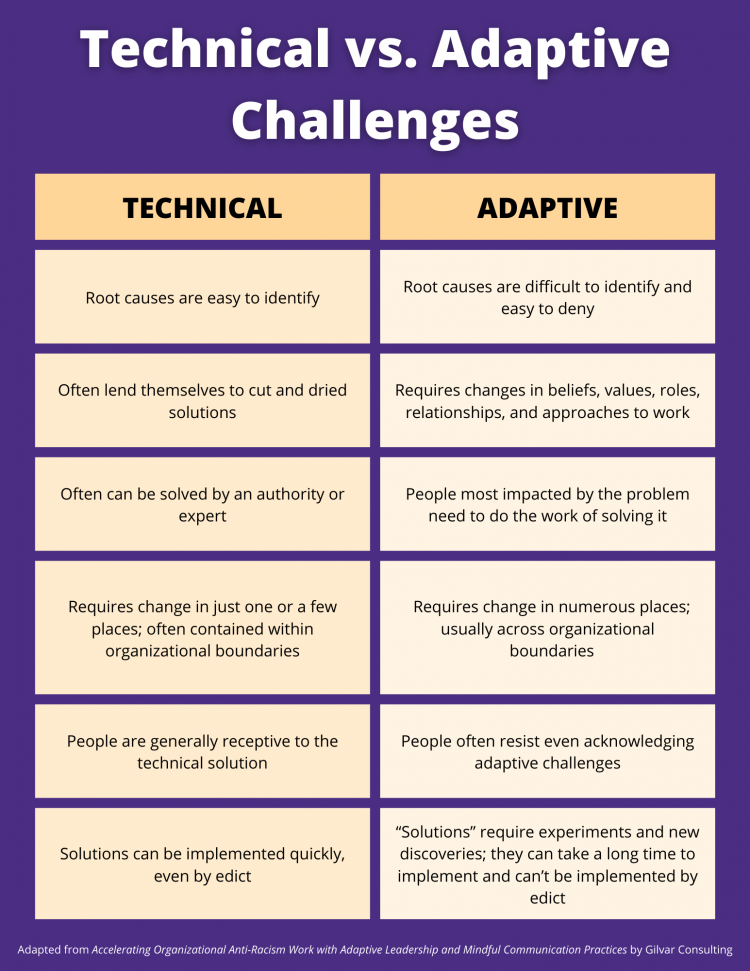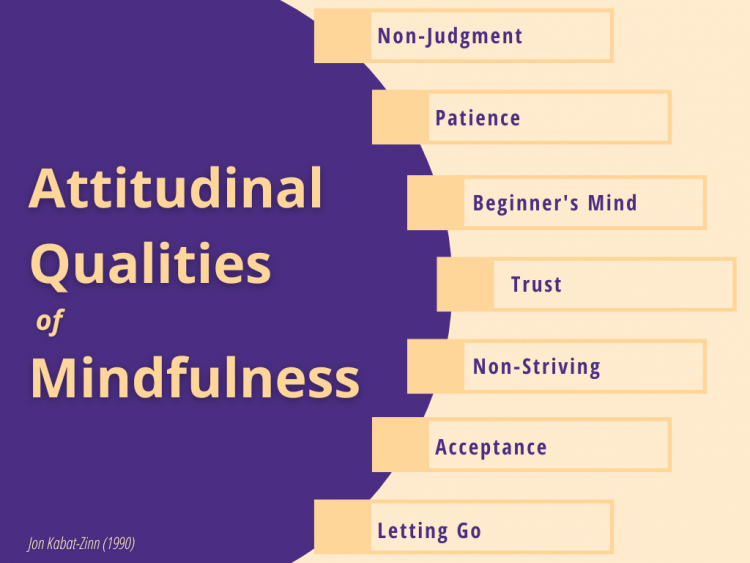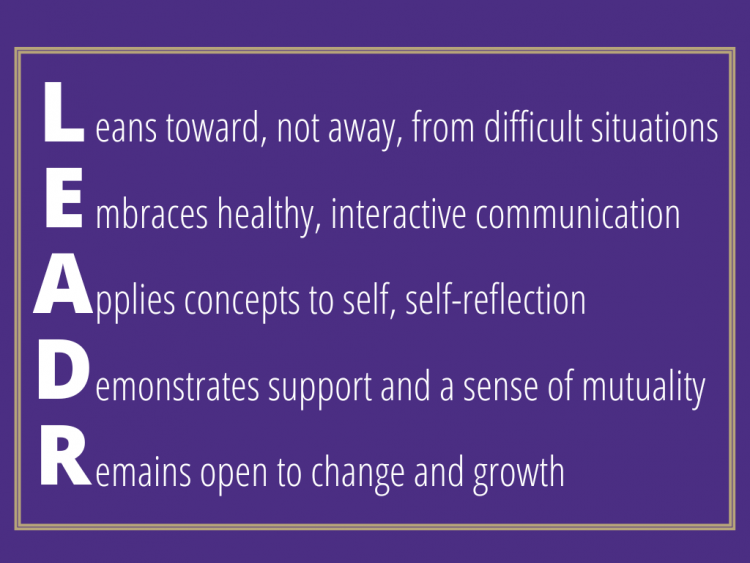September 15, 2022
Adaptive Leadership, Mindfulness, and Open Communication
9/15/2022 – Victoria Robinson
What are the challenges facing your organization, classroom, or workplace right now? Is your printer on the fritz? The coffee machine broken? An endless stack of paperwork that, despite your best efforts, never seems to abate?
Or maybe you’re facing a more complicated issue, fueled by a challenging history and an even more challenging future? As Marty Linsky and Ronald Heifetz put it in their introduction to The Practice of Adaptive Leadership:
“To build a sustainable world in an era of profound economic and environmental interdependence, each person, each country, each organization is challenged to sift through the wisdom and know-how of their heritage, to take the best from their histories, leave behind lessons that no longer serve them, and innovate, not for change’s sake, but for the sake of conserving and preserving the values and competence they find most essential and precious. This is a tall order, requiring people to look backward and forward at the same time.”
Our organizations and communities are caught in a modern push-pull. The increased stress of dual pandemics, systemic oppressions, and political unrest have the potential to alter the landscape of your organization, making mindful and compassionate leadership even more difficult. How do we lead our communities through this? How do we turn problems into potentials?
WHAT IS ADAPTIVE LEADERSHIP?
Developed by Linsky and Heifetz, adaptive leadership is a process and perspective that organizations can use to successfully adjust to a changing environment or situation. Many organizations that utilize traditional leadership models, in which a few leaders implement top-down changes based on their own priorities and perspectives, lack the flexibility and involvement to handle sudden shifts in environment.
For a university, understanding the rapidly changing social landscape and the ever-rotating nature of its student body is essential for maintaining a participatory environment in which students, staff, and faculty can participate and succeed.
In contrast to traditional forms of leadership, adaptive leadership solicits the ingenuity of the entire organization to solve challenges, rather than the expertise of the few. In this way, the problems that require adaptive leadership are different than technical challenges, which can be complex but are solved with the implementation of existing knowledge.
For example, if your organization’s billing system is out of date, you can bring in an expert to make changes and solve the issue.
On the other hand, adaptive challenges pose questions without clearly defined borders. Rather, they require solutions that go beyond the organization’s current expertise. Resolutions to these challenges often require a change of attitude, behaviors, and beliefs.
For instance, if your team has trouble retaining staff, you might require an examination of your organizational culture, meaning you need input from multiple people in multiple positions to understand the scope of the problem.

A successful adaptive leader, or a successful adaptive leadership process, will exhibit the following traits, many of which overlap:
Development: finding new ways to solve complex problems.
Successful problem-solving will mean that individuals within the organization will be continually learning and growing. Adaptive leaders will try new strategies and empower those around them to experiment, even if the result is a failure. For an organization to survive – and thrive – in a challenging setting, leadership must be committed to learning new things.
Adaptive solutions often require that we let go of familiar patterns and embrace the loss of old ways that are not serving the organization. A thriving organization finds new ways to sustain and renew itself during difficult times.
Organizational Justice: maintaining an environment where people feel both heard and informed.
Organizations will need creativity and ingenuity to overcome new challenges, drawn from every level of their structure. Thus, an adaptive leader creates an environment where all voices and perspectives are heard; a revolutionary answer can come from an unexpected place and being involved in the process of change makes members feel valued. Members that feel respected by their leadership are more likely to trust changes and new processes, a crucial part of successfully carrying out a solution.
This is partially why an explicit commitment to an anti-oppressive organizational culture creates more successful projects – members from marginalized populations that might have previously felt silenced are now encouraged to contribute solutions and revolutionary ideas.
Character: building trust through transparency and respect.
Earning the respect of those who rely on leadership means admitting failure. How a leader handles mistakes and missteps can determine member buy-in to changes in processes, goals, and personnel. An adaptive leader embraces the opportunity to demonstrate the humility and humanity that comes with their position. This includes a policy of open feedback and walking their talk.
Emotional Intelligence: managing emotions through times of discomfort.
Not only are adaptive leaders skilled in understanding their own emotions towards organizational changes, but also in gauging and encouraging the expression of others’ emotional reactions. Change can be hard, and when the status quo is upset, many members may feel a loss of comfort, stability, or security. Knowing how to navigate the negative emotions that may come with the change and acknowledging pain points will help smooth the transition.
MINDFULNESS AND COMMUNICATION
Many of the tenets of adaptive leadership are similar to the qualities of mindfulness and often associated with Kabat-Zinn’s (1990) seven attitudes that comprise the foundation of mindful practice:

A mindful, present-oriented approach means that leaders can embrace the uncertainty that adaptive solutions cultivate and manage the stress of many moving parts. Leadership that exhibits a heightened level of awareness not only supports a more effective management style but also encourages the well-being and health of the members under their care.
By modeling mindfulness, leaders improve communication and relationships across the entire organization. Gillis Chapman suggests that mindfulness practices help open up the “inner space” that is free of engrained fear and self-protection, processes that lock down the ability to listen with open attention.
“When communication is open, there is trust and honesty… Receiving feedback in this environment is a positive experience in the long run… Both the giver and the receiver of the feedback have learned something new and it’s important to acknowledge this. If the communication remains open, what emerges will be a new creation shaped by both of them, not something imposed by one over the other.”
In this way, adaptive leadership and mindfulness encourage a perspective of leadership and management that is less about how to increase returns and more about reconnecting with the humanity present at every level of your organization.
CONCLUSION
In any organization, the overlap of socioeconomic conditions and historic circumstances is a large piece of the well-being of your workforce. As leaders take on more responsibilities with heightened pressure, the temptation to lean into a go-go-go schedule can create an environment where deadlines are king, and members are valued by their output.
No one solution exists to solve the problems facing our organizations and communities, but our own Sasha Duttchoudhury, MSW offers a quick acronym to remind us of what adaptive leadership looks like in practice.

If you’re determined to create a person-centered work environment, where the well-being of your members is integrated into your processes and workflow, the tenets of mindfulness and adaptive leadership create room for awareness, empathy, and open communication to improve the health of your community.
References:
Gillis Chapman, S. (2014, April 10). The mirror of nowness: Feedback you can trust. Kindness Flows. http://www.susangillischapman.com/posts/the-mirror-of-nowness-feedback-you-can-trust/
Gilvar Consulting. (2021, April 22). Accelerating organizational anti-racism work with adaptive leadership and mindful communication practices. https://gilvarconsulting.com/accelerating-organizational-anti-racism-work-with-adaptive-leadership-and-mindful-communication-practices/
Heifetz, R., & Linsky, M. (2002, June). A survival guide for leaders. Harvard Business Review. https://hbr.org/2002/06/a-survival-guide-for-leaders
Heifetz, R., Linsky, M., & Grashow, A. (2009). The practice of adaptive leadership, Tools and tactics for changing your organization and the world. Harvard Business Press.
Kabat-Zinn, J. (1990). Full catastrophe living: Using the wisdom of your body and mind to face stress, pain, and illness. Delacorte.
Raney, A.F. (2014). Agility in adversity: Integrating mindfulness and principles of adaptive leadership in the administration of a community mental health center. Clinical Social Work Journal, 42, 312-320. https://doi.org/10.1007/s10615-014-0487-0
Thompson, T. (2018). Mindfulness and leadership insights and benefits. Practicing OD. https://www.csun.edu/sites/default/files/Mindfulness-Leadership.pdf
